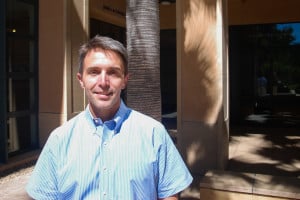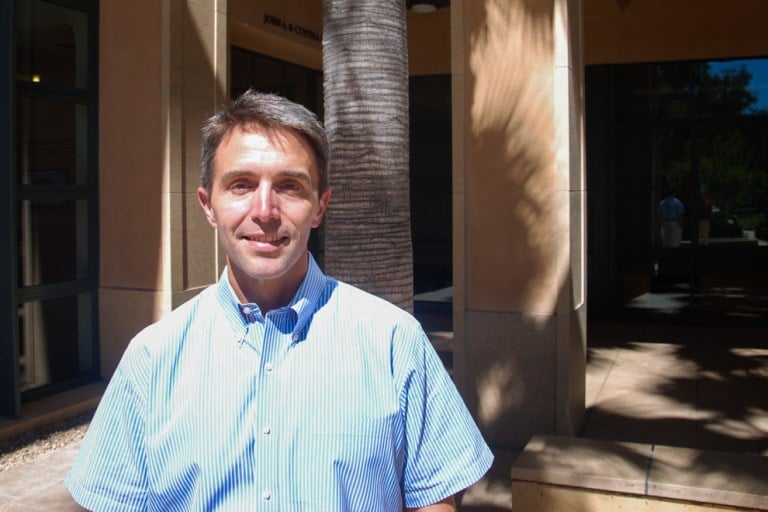
Three weeks ago, professor of economics Mark Duggan assumed the directorship of the Stanford Institute for Economic Policy Research (SIEPR). The Daily sat down with him to hear about his plans for expanding undergraduate research in economic policy and better communicating research to policymakers.
The Stanford Daily (TSD): Could you give us a little bit of background on SIEPR’s role at Stanford from your point of view?
Mark Duggan (MD): SIEPR does a number of things. One of the things that we try hard to do is to support research on economic policy here at Stanford. That research is performed by faculty — some are in the econonmics department, some are in the business school, some are in other places around campus — and we try to support that research on really policy-relevant topics.
There are a lot of things that the government does, and economists will often help to try to understand the tradeoffs of those policies. Take something like the Affordable Care Act, Obamacare — it’s a complicated piece of legislation. It’s expanding health insurance coverage; maybe it’s affecting health care costs, and economists want to try to telescope in to understand what is happening as a result of these big changes in economic policy so that maybe policymakers down the road will be better equipped to make better decisions.
I think a big part of what we do is trying to support economic policy research, and that can consist of trying to provide resources to faculty for hiring research assistants. We also support economic research by students here, especially by graduate students. I’m only three weeks into the job, but I’m really eager to expand on creating opportunities for undergrads to do economic research, too – on things that interest them.
We have a lot of events, too. Next week we’re going to have former chairman of President Bush’s Council of Economic Advisors come to speak on Tuesday. In November, we will have the former head of President Obama’s Office of Management and Budget.
It’s a big job to basically assume the directorship after John Shoven because he’s been the director for 16 years. He’s done an amazing job so it’s a little bit of a daunting challenge, but at the same time he’s created great momentum.
We’ve just recruited another strong set of people, and I think [we’re] trying even harder to take that research from the ivory tower and get it out there in such a way that the general public, the media and even policymakers or people in business can benefit from – because a lot of the research that we’re doing is highly policy relevant.
I worked in the Obama administration on Obamacare and other things, and I’ve testified before Congress. I certainly don’t know everything, but I know a bit about how D.C. works. I think that oftentimes it is helpful if you can distill what might be really complicated research into something that those on the front lines can digest. It can potentially have an impact. I think there are a lot of things that SIEPR does do and can do even better.
TSD: You mentioned your research on the effects of the Affordable Care Act, and I know you worked on that project over the summer. What other projects have you been working on since you came to Stanford last year?
MD: With the Affordable Care Act – just to give you a sense – it is now the case in California that one out of every three California residents are on the Medicaid program. That’s a huge increase over just the last two years, and it’s driven largely by Obamacare. In one set of projects, I’m trying to understand what effect that kind of expansion has had on what sort of healthcare people get, where they get treated – does it affect their health; does it affect health costs?
I’m also doing a set of projects on other large scale government programs. In one set of projects I have an undergraduate and a graduate student here assisting me along with a coauthor from Wellesley College. We’re trying to assess what’s been driving that increase in disability enrollment among veterans and what effect it’s having on them.
I also have this arsenal of research that I’ve done that, depending on what’s happening in the real world, may suddenly become pretty relevant. Right now a big issue in the healthcare sector is whether the federal government is going to allow two big mergers in the health insurance industry. On the one hand, if the government lets the mergers go forward, maybe that will lead to efficiencies, and maybe that will give the insurers more bargaining power so that they can hold down healthcare costs from hospitals and physicians. But on the other hand, maybe it will give the insurers more marketing power and cause them to raise prices and innovate less than they otherwise would. And just this week that research was cited in testimony before the U.S. Senate, and I think a large number of senators heard of this research. It is an example of exactly the kind of thing that we’re trying to do at SIEPR – so that whenever policy makers get around to considering a change that they have the best possible evidence to draw from.
TSD: For students who are interested in getting involved, what steps specifically would you advise them to take?
MD: They can just email me.
I’ve been reaching out proactively to people in programs like Stanford in Washington, Stanford in Government, people over at the Haas Center for public Service, people here in the public policy program at Stanford. I’m trying to connect with people all over campus because I think there are a lot of people doing great stuff at Stanford that touches on economic policy. I’m eager to collaborate with people all over the place.
I’m going to try to have these events where I hear from students about [what they’re interested in]. I did this thing at Wharton. It’s similar to SIEPR but on a much smaller scale, and there we had this student association where, at any point in time, we had 15 or more students who were involved with what we were doing and were ambassadors for us in the student body.
TSD: Do you see yourself creating a student association here similar to the one that you had at Wharton?
MD: Possibly – if I think there’s an appetite for it, then absolutely. I want to get undergrads more involved. I’m eager to hear from people about how best to do it.
I’m kind of embarrassed to admit, but I don’t have a Facebook page or Twitter account, but we’re trying here at SIEPR to develop a bit of a social media presence. I think students can be unbelievably helpful to us on that.
I would like us to do more to inform people about the landscape of issues that are out there so that they can figure out what is the issue here that they identify most with.
I think [at Stanford] there’s a lot of interest in coming up with innovative ways to tackle things in a data-driven way, and I think that there’s just a huge arsenal of people here who, if they decided to shine the light on some of the issues that I’ve talked about, it could be very rewarding.
This interview has been condensed and edited.
Contact Tristan Vanech at tvanech ‘at’ stanford.edu.
